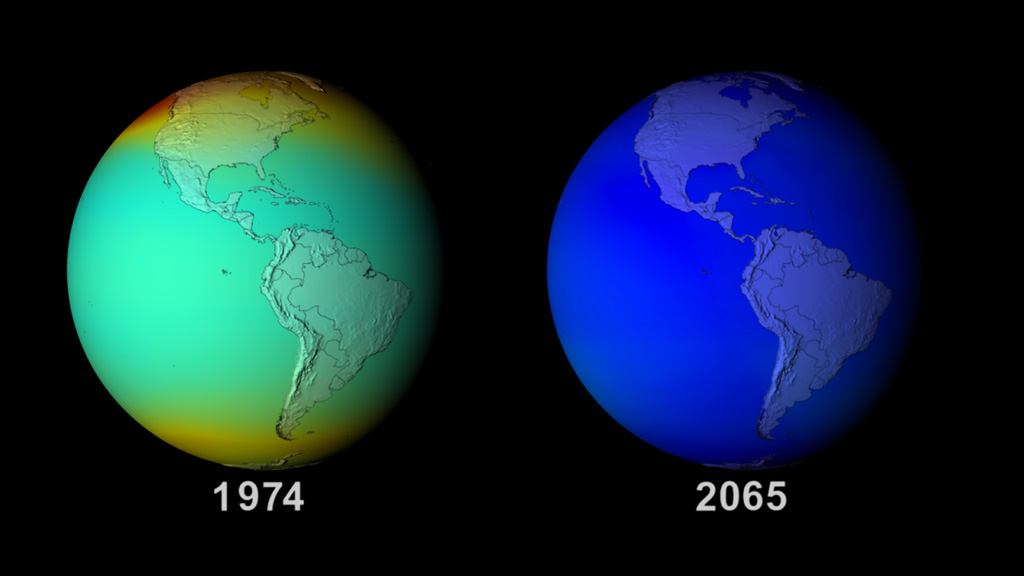What Would have Happened to the Ozone Layer if Chlorofluorocarbons (CFCs) had not been Regulated?
Led by NASA Goddard scientist Paul Newman, a team of atmospheric chemists simulated 'what might have been' if chlorofluorocarbons (CFCs) and similar ozone-depleting chemicals were not banned through the Montreal Protocol. The comprehensive model — including atmospheric chemical effects, wind changes, and solar radiation changes — simulated what would happen to global concentrations of stratospheric ozone if CFCs were continually added to the atmosphere.
The visualizations below present two cases, from several different viewing positions: the 'world avoided' case, where the rate of CFC emission into the atmosphere is assumed to be that of the period before regulation, and the 'projected' case, which assumes the current rate of emission, post-regulation. Both cases extrapolate to the year 2065.
Comparison between projected and world-avoided cases.
World-avoided case
Projected case
World-avoided case
Projected case
World-avoided case
Projected case
World-avoided case
Projected case
Years only

Colorbar
Comparison of the "Projected" (Left Sphere) and the "World Avoided" (Right Sphere) if chlorofluorocarbons and other ozone-depleting chemicals were not banned through the Montreal Protocol. This sequence contains the year overlay and the colorbar.
This shorter version was encoded for Dr. Waleed Abdalatis's lecture on October 16, 2012 at the Library
of Congress. His lecture is titled "Looking Homeward Toward Earth: The Power of Perspective".
Credits
Please give credit for this item to:
NASA/Goddard Space Flight Center Scientific Visualization Studio
-
Animators
- Trent L. Schindler (UMBC)
- Lori Perkins (NASA/GSFC)
-
Interviewee
- Paul Newman (NASA/GSFC)
-
Producer
- Jefferson Beck (UMBC)
-
Scientist
- Paul Newman (NASA/GSFC)
Release date
This page was originally published on Tuesday, March 17, 2009.
This page was last updated on Sunday, January 5, 2025 at 10:01 PM EST.
Series
This page can be found in the following series:Tapes
The media on this page originally appeared on the following tapes:-
Ozone World Avoided
(ID: 2009018)
Thursday, March 19, 2009 at 4:00AM
Produced by - James Collier (NASA)
